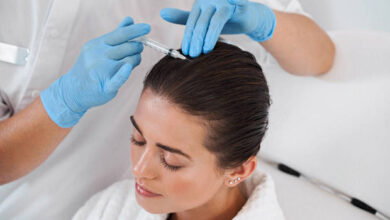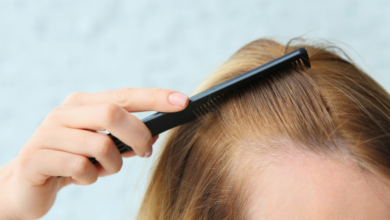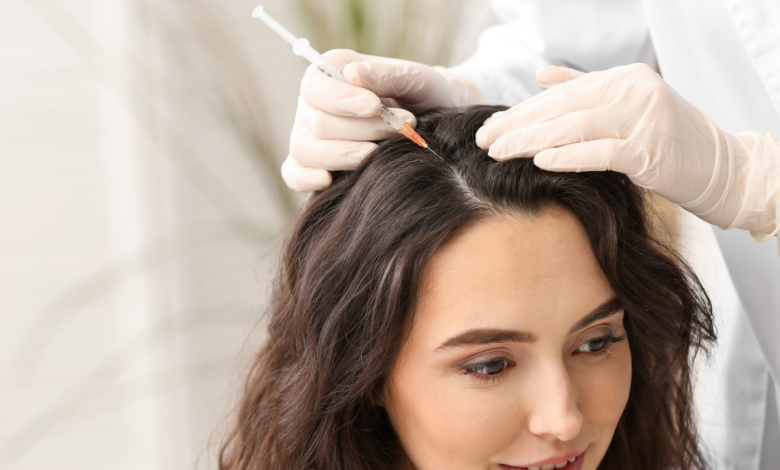
In the fast-paced world of cosmetic procedures, hair transplantation techniques have been evolving to offer more effective and natural-looking results. For Dubai women considering hair transplant surgery, it is crucial to stay informed about these advancements and understand how they can benefit them.
This article provides a comprehensive overview of the latest techniques in hair transplantation, highlighting the specific information that Dubai women need to know to make informed decisions about their hair restoration journey. From the innovative FUE method to the revolutionary DHI technique, this article aims to equip Dubai women with the knowledge they need to rejuvenate their hair with confidence.
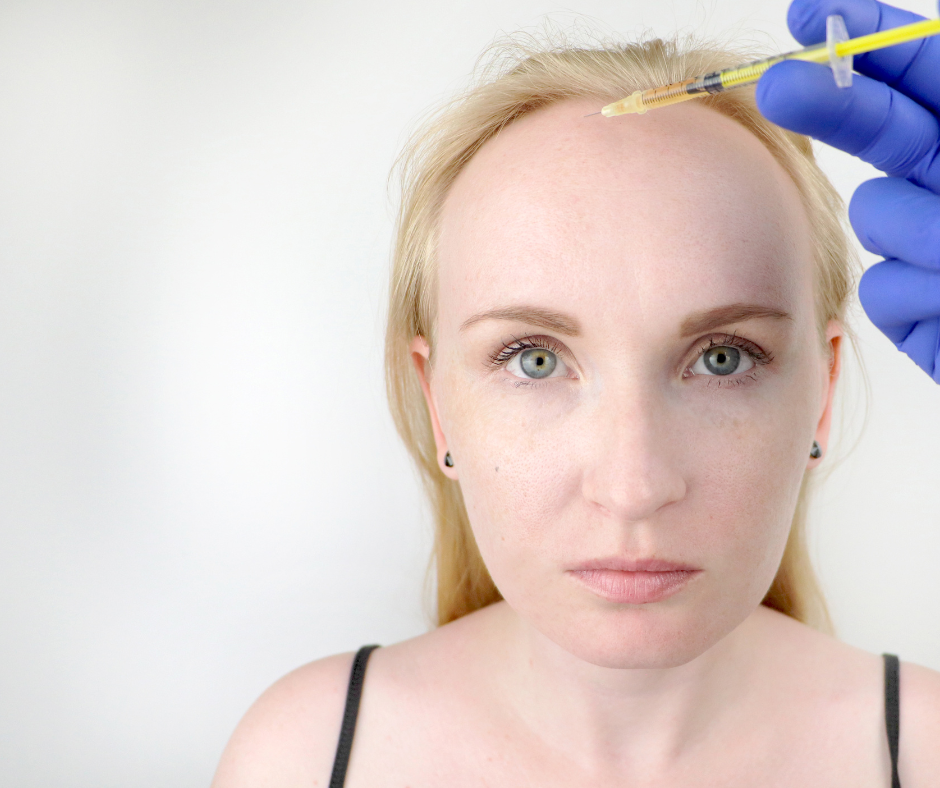
Understanding Hair Transplantation
Hair transplantation is a surgical procedure that involves transplanting hair follicles from a donor area to a recipient area to restore hair in areas affected by hair loss. This procedure can be an effective solution for both men and women who are experiencing baldness or thinning hair. Hair transplantation has evolved over the years, with different techniques being developed to achieve more natural-looking results. In this article, we will explore the various types of hair transplantation techniques, their advantages and disadvantages, and the factors to consider when choosing a hair transplantation clinic.
What is Hair Transplantation
Hair transplantation is a surgical procedure that involves extracting hair follicles from a donor area, typically the back or sides of the head, and implanting them into areas where hair loss has occurred. The transplanted hair follicles continue to grow in the new location, providing a permanent solution to hair loss. The success of hair transplantation depends on factors such as the quality and quantity of the donor hair, the skill of the surgeon, and the overall health of the patient.
How Does Hair Transplantation Work
Hair transplantation works by transplanting healthy hair follicles from a donor area to a recipient area. The procedure is usually performed under local anesthesia to ensure the patient’s comfort. The surgeon carefully extracts individual hair follicles from the donor area and then implants them into tiny incisions made in the recipient area. The hair follicles are placed in a way that mimics the natural hair growth pattern, creating a seamless and natural-looking result. The transplanted hair follicles will continue to grow and can be treated and styled like natural hair.
Different Types of Hair Transplantation Techniques
There are several different techniques used in hair transplantation, each with its own advantages and disadvantages. The two main types of hair transplantation techniques are traditional techniques and modern techniques. Let’s explore each of them in detail.
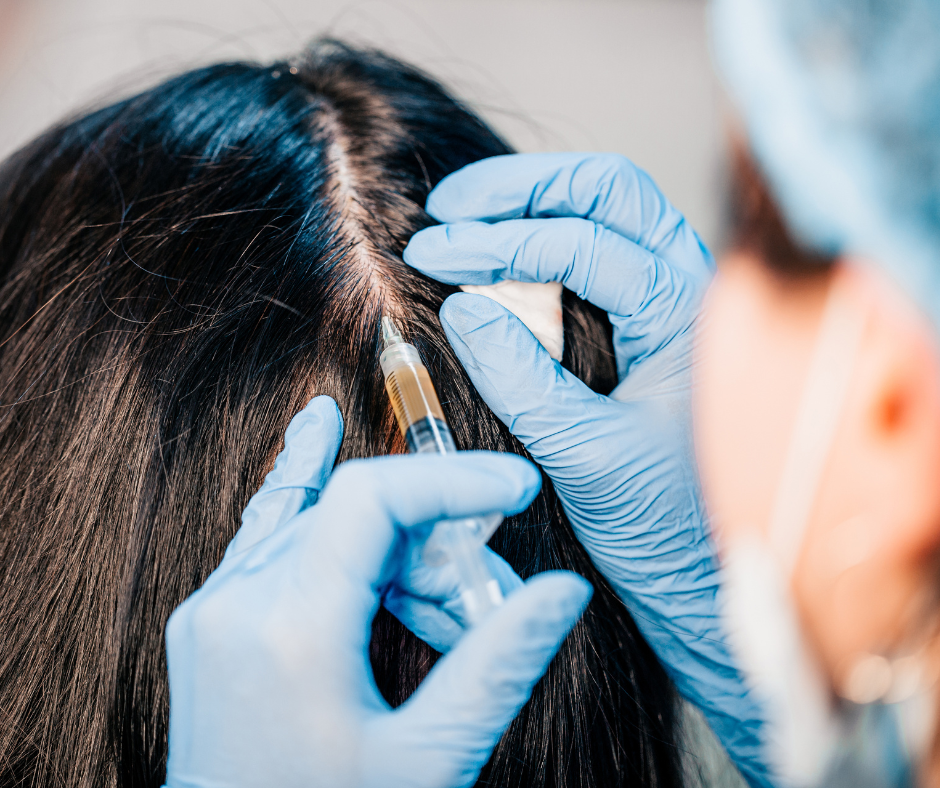
Traditional Hair Transplantation Techniques
Follicular Unit Transplantation (FUT)
Follicular Unit Transplantation, also known as strip harvesting, is a traditional hair transplantation technique. In this technique, a strip of scalp containing hair follicles is surgically removed from the donor area. The strip is then dissected into individual hair grafts, which are then transplanted into the recipient area. FUT allows for the transplantation of a large number of grafts in a single session, making it a suitable option for individuals with extensive hair loss.
Advantages and Disadvantages of FUT
One of the main advantages of FUT is that it allows for the transplantation of a large number of grafts in a single session. This can be beneficial for individuals with advanced hair loss who require a significant number of grafts. However, one drawback of FUT is that it leaves a linear scar on the back of the head where the strip of scalp was removed. This scar can be visible if the individual prefers to wear their hair short. Additionally, the recovery period after FUT may be longer compared to other techniques.
Scarring and Recovery of FUT
The scarring from FUT can vary depending on factors such as the individual’s healing process and the skill of the surgeon. However, modern closure techniques have significantly improved the appearance of scars, making them less noticeable. The recovery period after FUT typically involves some discomfort, swelling, and scabbing in the donor and recipient areas. Patients are usually advised to avoid physical activities that may cause excessive sweating or strain on the scalp during the initial healing period.
Modern Hair Transplantation Techniques
Follicular Unit Extraction (FUE)
Follicular Unit Extraction is a modern hair transplantation technique that involves extracting individual hair follicles directly from the donor area, without the need for a strip of scalp. In FUE, the surgeon uses a specialized instrument to remove the hair follicles one by one from the donor area. These follicles are then transplanted into the recipient area using a similar technique as FUT.
Advantages and Disadvantages of FUE
One of the main advantages of FUE is that it does not leave a linear scar like FUT. Instead, small puncture scars are left at the extraction sites, which are less noticeable. FUE also allows for a quicker recovery compared to FUT, with less post-operative discomfort and scarring. However, FUE may not be suitable for individuals with extensive hair loss, as it can be time-consuming and requires a high level of surgical skill to extract a sufficient number of grafts.
Scarless and Minimally Invasive Approach of FUE
FUE is often referred to as a scarless and minimally invasive approach to hair transplantation due to the absence of a linear scar. The small puncture scars left from FUE are typically not visible once the healing process is complete. This makes FUE an ideal option for individuals who prefer to wear their hair short or in a style that exposes the back of the head. The minimally invasive nature of FUE also allows for a quicker recovery, with most patients able to resume their normal activities within a few days.

Robotic Hair Transplantation
Introduction to Robotic Hair Transplantation
Robotic hair transplantation is a cutting-edge technique that utilizes artificial intelligence and robotic technology to perform hair transplantation procedures. In this technique, a robotic system is used to extract and transplant hair follicles with a high level of precision. The robotic system scans the patient’s scalp, identifies the optimal hair follicles to be harvested, and then performs the extraction and transplantation process with minimal human intervention.
Artificial Intelligence and Precision of Robotic Hair Transplantation
The use of artificial intelligence in robotic hair transplantation allows for a more precise and accurate procedure. The robotic system is programmed to analyze and select the best hair follicles for transplantation, taking into account factors such as follicle density, angle, and orientation. This precision helps ensure a natural-looking hairline and overall result.
Benefits and Limitations of Robotic Hair Transplantation
One of the main benefits of robotic hair transplantation is the high level of precision and accuracy it offers. The robotic system can perform thousands of follicle extractions and transplantations in a single session, reducing the risk of human error. Robotic hair transplantation also eliminates the need for manual extraction, reducing the physical strain on the surgeon. However, robotic hair transplantation may not be suitable for all individuals, as it requires specialized equipment and expertise, which may limit its availability in certain clinics.
Platelet-Rich Plasma (PRP) Therapy
PRP Therapy for Hair Growth Stimulation
Platelet-Rich Plasma (PRP) therapy is a non-surgical procedure that involves using the patient’s own blood to stimulate hair growth. In this procedure, blood is drawn from the patient and processed to separate the platelet-rich plasma. The platelet-rich plasma is then injected into the scalp, where it releases growth factors that promote hair growth and improve the overall health of the hair follicles.
How PRP Therapy Complements Hair Transplantation
PRP therapy can be used in conjunction with hair transplantation to enhance the results and promote faster healing. PRP injections can be administered before and after the transplantation procedure to stimulate hair growth and improve the overall quality of the transplanted hair. PRP therapy can also help minimize scalp inflammation and promote better wound healing, resulting in a more comfortable and quicker recovery.
Combined PRP and Hair Transplantation Results
Combining PRP therapy with hair transplantation has shown promising results in terms of hair growth and overall patient satisfaction. The growth factors present in PRP help nourish the transplanted hair follicles and promote their survival. The combination of PRP therapy and hair transplantation can result in denser, healthier, and more natural-looking hair growth.
Stem Cell Hair Transplantation
Utilizing Stem Cells in Hair Transplantation
Stem cell hair transplantation is an emerging technique that involves utilizing stem cells to enhance the regrowth and survival of transplanted hair follicles. Stem cells are specialized cells in the body that have the ability to differentiate into different cell types. In hair transplantation, stem cells can be extracted from the patient’s own body and then injected into the recipient area to promote hair growth and improve the overall success of the procedure.
The Regenerative Potential of Stem Cells
Stem cells have the regenerative potential to stimulate the growth of new hair follicles and improve the quality of existing ones. The injected stem cells can promote the proliferation of hair follicle cells and increase the blood supply to the transplanted area. This regenerative effect can lead to thicker, healthier, and more natural-looking hair growth.
Promising Results in Hair Restoration
Although stem cell hair transplantation is still a relatively new technique, early studies and patient testimonials have shown promising results in hair restoration. The regenerative properties of stem cells have the potential to revolutionize the field of hair transplantation, providing more effective and long-lasting results for individuals with hair loss.
Microneedling and Hair Transplantation
Using Microneedling as an Adjunct to Hair Transplantation
Microneedling is a technique that involves creating tiny puncture wounds in the skin using a device with small needles. This process stimulates the natural healing response of the body, leading to increased collagen production and improved blood circulation. When used as an adjunct to hair transplantation, microneedling can enhance the absorption of growth factors and improve the overall success of the procedure.
Enhanced Absorption of Growth Factors with Microneedling
Microneedling creates microchannels in the scalp, which allows for better penetration and absorption of growth factors. When growth factors are applied topically or injected into the scalp after microneedling, they can reach deeper layers of the skin and stimulate hair follicle growth. This combination of microneedling and growth factor application can lead to improved hair growth and a higher success rate in hair transplantation.
Improving Hair Transplantation Results with Microneedling
The use of microneedling in conjunction with hair transplantation has shown promising results in terms of improving the overall outcome of the procedure. Microneedling can help improve the quality and thickness of the transplanted hair, as well as promote better healing and minimize the risk of complications. This technique is particularly beneficial for individuals with thinning hair or compromised hair follicles, as it enhances the overall success of the transplantation procedure.
Hair Transplantation for Women
Understanding Female Pattern Hair Loss
Female pattern hair loss is a common condition that affects many women worldwide. It is characterized by a gradual thinning of the hair on the scalp, primarily in the central part and crown area. Female pattern hair loss can have a significant impact on a woman’s self-esteem and confidence. Hair transplantation can be a viable solution for women with this condition, providing them with natural-looking and long-lasting results.
Unique Considerations for Hair Transplantation in Women
Hair transplantation in women requires careful consideration of several factors. Women usually have different patterns of hair loss compared to men, requiring a different approach in designing the hairline and distributing the transplanted hair follicles. The donor area in women is also typically smaller, which may limit the number of grafts that can be harvested. Additionally, women may have conditions such as hormonal imbalances or underlying medical issues that need to be addressed before proceeding with hair transplantation.
Success Rates and Realistic Expectations for Women
The success rates of hair transplantation in women can vary depending on factors such as the extent of hair loss, the quality of the donor hair, and the skill of the surgeon. It is important for women considering hair transplantation to have realistic expectations and understand that it may take several months to see the full results. The success of the procedure also depends on the individual’s commitment to post-operative care and follow-up appointments.
Choosing the Right Hair Transplantation Clinic
Researching the Clinic’s Experience and Expertise
When choosing a hair transplantation clinic, it is crucial to thoroughly research the clinic’s experience and expertise. Look for clinics that specialize in hair transplantation and have a proven track record of successful procedures. Check for testimonials or before-and-after photos of previous patients to assess the quality of their work. It is also important to ensure that the clinic has qualified and experienced surgeons who are skilled in the latest hair transplantation techniques.
Considering Patient Reviews and Testimonials
Patient reviews and testimonials can provide valuable insights into the quality of care and service provided by a hair transplantation clinic. Look for reviews from previous patients who have undergone similar procedures to get an idea of their experience and satisfaction with the results. Consider both positive and negative reviews to make an informed decision.
Consulting with the Hair Transplant Surgeon
Before undergoing hair transplantation, it is essential to schedule a consultation with the hair transplant surgeon. During this consultation, the surgeon will assess your hair loss condition, evaluate the donor area, and discuss your goals and expectations for the procedure. This consultation is an opportunity to ask any questions you may have and to gain a clear understanding of the procedure and its potential outcomes. A reputable and experienced surgeon will provide you with honest and realistic advice based on your specific situation.
Preparing for Hair Transplantation
Meeting with the Surgeon for a Detailed Assessment
Prior to undergoing hair transplantation, it is important to meet with the surgeon for a detailed assessment. This assessment will involve a thorough examination of your scalp, an evaluation of your hair loss pattern, and a discussion of your medical history. The surgeon will also assess the quality and quantity of your donor hair to determine the feasibility of the procedure.
Discussing Hair Transplantation Goals and Expectations
During the assessment, it is crucial to have an open and honest discussion with the surgeon about your goals and expectations for the hair transplantation procedure. This will help ensure that both you and the surgeon have a clear understanding of what can be realistically achieved. The surgeon will provide you with an honest assessment of the outcome you can expect and will discuss any limitations or potential risks associated with the procedure.
Understanding the Preoperative Instructions
Before the hair transplantation procedure, you will receive detailed preoperative instructions from the surgeon. It is important to carefully follow these instructions to ensure a successful procedure and minimize the risk of complications. The instructions may include guidelines on medication use, hair washing, smoking cessation, and dietary restrictions. Following these instructions will help prepare your scalp and body for the transplantation procedure, resulting in a smoother and more efficient process.
In conclusion, hair transplantation is a surgical procedure that offers a permanent solution to hair loss. With advancements in techniques such as FUE, robotic hair transplantation, PRP therapy, stem cell hair transplantation, and the use of microneedling, individuals have access to an array of options for restoring their hair. When considering hair transplantation, it is essential to carefully research and choose a reputable and experienced clinic, consult with a skilled surgeon, and have realistic expectations for the outcome. By understanding the different techniques available and the process involved, you can make an informed decision and achieve the natural-looking and long-lasting results you desire.


